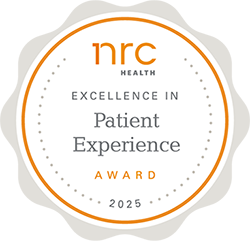Pediatric Hydrocephalus
Hydrocephalus is the most common condition treated by pediatric neurosurgeons. It arises when there is a disturbance in the normal production, circulation and/or reabsorption of cerebrospinal fluid (CSF) in the brain. When this occurs, there is a characteristic buildup of CSF within the ventricles (normal hollow cavities within the brain) that may cause progressive pressure, leading to brain damage or death.
Ventricular Shunts
A shunt is essentially a hollow tube with a small valve that prevents over drainage. The top end of the tube is in the ventricle and has access to the CSF and the bottom end goes to a body cavity where the fluid may be reabsorbed. The most common cavity utilized is the peritoneum/abdomen (VP shunt) or atrium of the heart (VA shunt). Shunts were developed in the 1960s and have proven an effective way of controlling hydrocephalus; however, they are prone to obstruction and infection.
Our group has extensive experience with ventricular shunts. We perform over 300 shunt operations per year and are involved in multiple multi-center research initiatives to advance treatments.
Endoscopic Third Ventriculostomy (ETV)
An ETV can be thought of as a CSF “bypass” procedure and is performed by making a small hole through the floor of the third ventricle of the brain. This allows the CSF to leave the ventricles, entering the space around the outside of the brain where it is normally absorbed. ETV is most effective if the primary problem is an obstruction to flow elsewhere in the brain. An effective ETV eliminates the need for a shunt in children with hydrocephalus. Only certain children are good candidates for ETV.
ETV/CPC
The historical success rate of ETV is low in infants less than two years of age. The addition of choroid plexus cauterization (CPC) to ETV by Ben Warf, MD, while practicing in Uganda, dramatically increased the treatment success rate in infants when compared to ETV alone. Along with our Hydrocephalus Clinical Research Network partner programs, we are performing increasing numbers of ETV/CPC procedures, hoping to reduce the overall number of shunts placed and the morbidity associated with them. Most of our neurosurgeons learned the technique for ETV/CPC directly from its inventor, Dr. Warf. Our ever-growing experience with ETV/CPC, together with that of our HCRN colleagues, will help us learn how to provide more effective and safer care for infants with hydrocephalus in the future
Hydrocephalus Research
We are one of the founding sites of the Hydrocephalus Clinical Research Network (HCRN) and are the largest contributor since 2008. Currently, there are over ten active protocols ranging from participation in the registry to a randomized controlled clinical trial “Endoscopic versus Shunt Treatment of Hydrocephalus in Infants (ESTHI trial).” Funding includes contributions from the Hydrocephalus Association, National Institute of Health and the Patient-Centered Outcomes Research Institute. Additionally, divisional research has delved into the post-traumatic stress related in caregivers and patients with hydrocephalus. Current efforts are assessing interventions that could help build resilience skills in families. Efforts are ongoing to evaluate racial and sex differences in the treatment of hydrocephalus.









